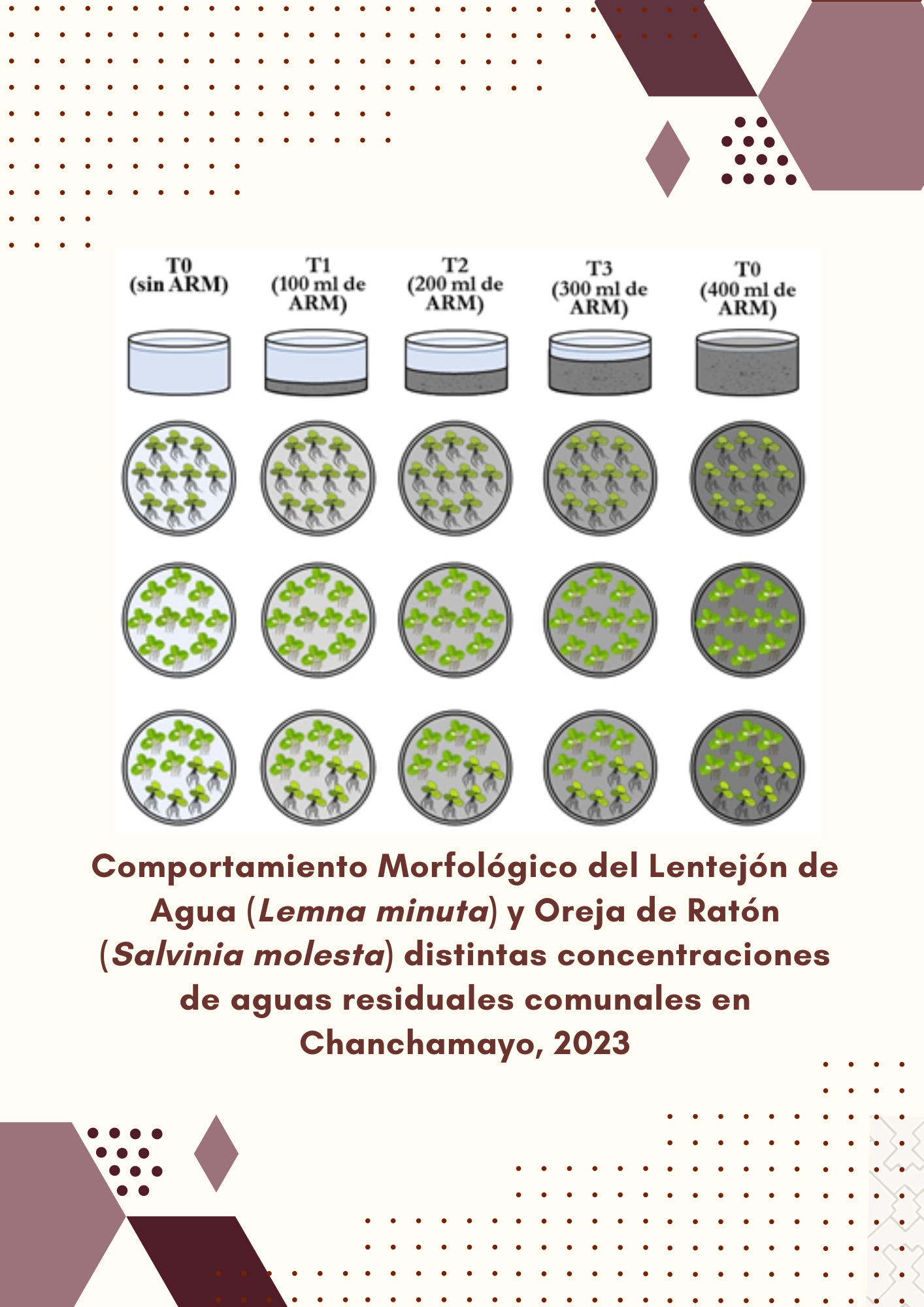Morphological Behavior of Lemna minuta and Salvinia molesta under different concentrations of municipal wastewater in Chanchamayo, 2023
Main Article Content
Abstract
The development of native communities in Chanchamayo involves the generation of wastewater, resulting in the contamination of water resources. Therefore, the application of cost-effective and viable technologies with local resources is an important necessity. For this reason, the behavior of Lemna minuta and Salvinia molesta subjected to different concentrations of communal wastewater was studied. Three systems were utilized: 1) the first system with 10 seedlings of L. minuta, 2) the second with 10 seedlings of S. molesta, and 3) the third with 5 seedlings of each plant. In total, 15 treatments were established, resulting from 5 types of wastewater concentrations (100%, 75%, 50%, 25%, and 0%), each with 3 replications. Treatments T1 and T2 from the first and second treatment systems stood out with better growth. On the other hand, in the third treatment system, S. molesta exhibited notable morphological growth in treatments with 25%, 50%, and 75% wastewater. Meanwhile, T3 and T4 showed more limited development. Therefore, treatments with 25% and 50% wastewater, across the three systems, were more effective for plant growth.
Article Details

This work is licensed under a Creative Commons Attribution 4.0 International License.
